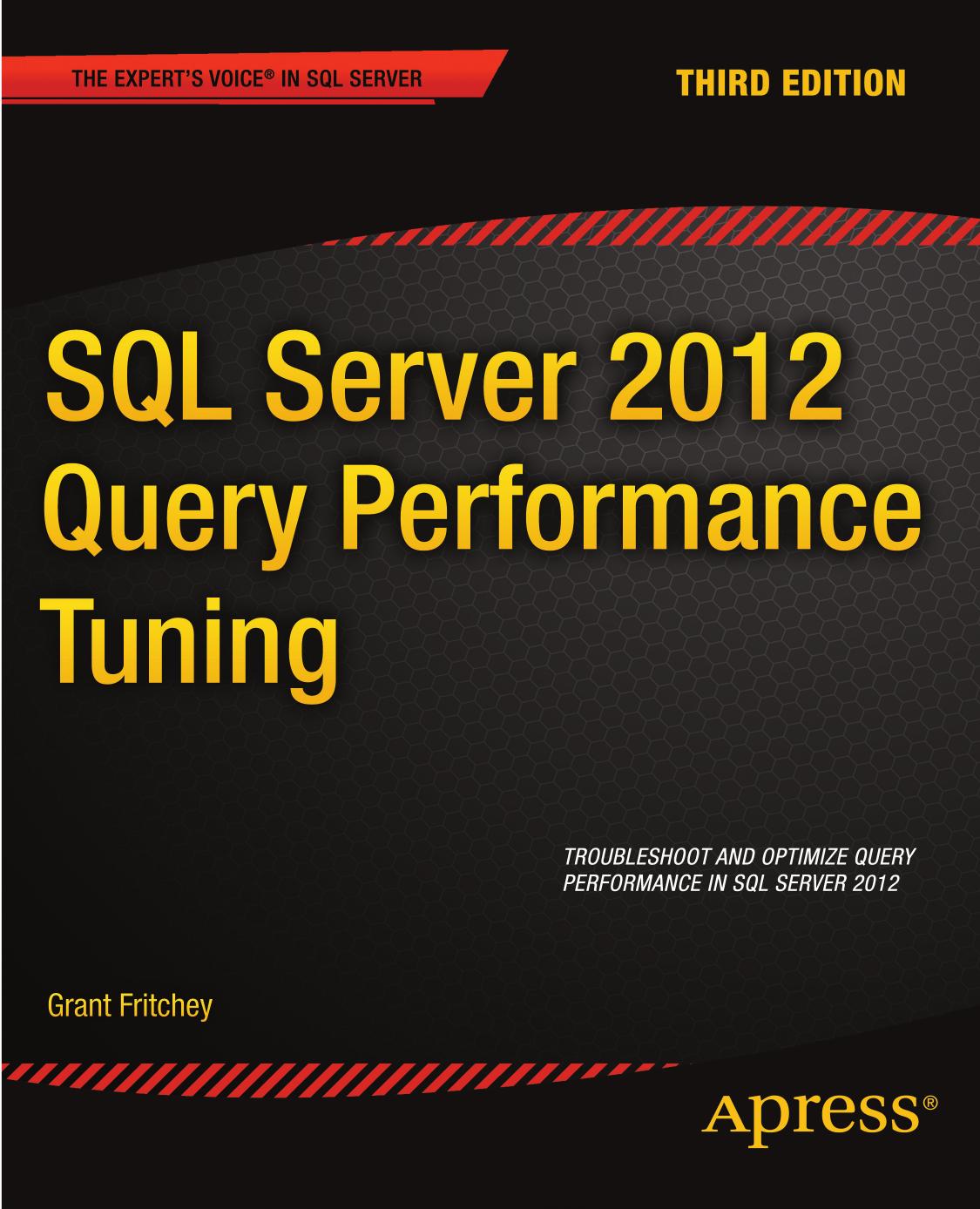SQL Server 2012 Query Performance Tuning by Grant Fritchey

Author:Grant Fritchey
Language: eng
Format: epub, pdf
ISBN: 9781430242031
Publisher: Apress
Binding
The parse tree generated by the parser is passed to the next part of the algebrizer for processing. The algebrizer now resolves all the names of the different objects, meaning the tables, the columns, and so on, that are being referenced in the T-SQL in a process called binding. It also identifies all the various data types being processed. It even checks for the location of aggregates (such as GROUP BY and MAX). The output of all these verifications and resolutions is a binary set of data called a query processor tree.
To see this part of the algebrizer in action, if the following batch query (--algebrizertest in the download) is submitted, then the first three statements before the error statement are executed, and the errant statement and the one after it are cancelled.
IF (SELECT OBJECT_ID('dbo.Test1')
) IS NOT NULL
DROP TABLE dbo.Test1 ;
GO
CREATE TABLE dbo.Test1 (c1 INT) ;
INSERT INTO dbo.Test1
VALUES (1) ;
SELECT 'Before Error',
c1
FROM dbo.Test1 AS t ;
SELECT 'error',
c1
FROM dbo.no_Test1 ;
--Error: Table doesn't exist
SELECT 'after error' c1
FROM dbo.Test1 AS t ;
If a query contains an implicit data conversion, then the normalization process adds an appropriate step to the query tree. The process also performs some syntax-based optimization. For example, if the following query (--syntaxoptimize in the download) is submitted, then the syntax-based optimization transforms the syntax of the query, as shown in the T-SQL at the top of Figure 9-2, where BETWEEN becomes >= and <=.
Download
SQL Server 2012 Query Performance Tuning by Grant Fritchey.pdf
This site does not store any files on its server. We only index and link to content provided by other sites. Please contact the content providers to delete copyright contents if any and email us, we'll remove relevant links or contents immediately.
Algorithms of the Intelligent Web by Haralambos Marmanis;Dmitry Babenko(16223)
Azure Data and AI Architect Handbook by Olivier Mertens & Breght Van Baelen(7673)
Building Statistical Models in Python by Huy Hoang Nguyen & Paul N Adams & Stuart J Miller(7654)
Serverless Machine Learning with Amazon Redshift ML by Debu Panda & Phil Bates & Bhanu Pittampally & Sumeet Joshi(7529)
Data Wrangling on AWS by Navnit Shukla | Sankar M | Sam Palani(7290)
Driving Data Quality with Data Contracts by Andrew Jones(7290)
Machine Learning Model Serving Patterns and Best Practices by Md Johirul Islam(7026)
Learning SQL by Alan Beaulieu(6235)
Weapons of Math Destruction by Cathy O'Neil(6204)
Big Data Analysis with Python by Ivan Marin(5930)
Data Engineering with dbt by Roberto Zagni(4928)
Solidity Programming Essentials by Ritesh Modi(4563)
Time Series Analysis with Python Cookbook by Tarek A. Atwan(4398)
Pandas Cookbook by Theodore Petrou(4086)
Blockchain Basics by Daniel Drescher(3532)
Natural Language Processing with Java Cookbook by Richard M. Reese(3140)
Hands-On Machine Learning for Algorithmic Trading by Stefan Jansen(3039)
Learn T-SQL Querying by Pam Lahoud & Pedro Lopes(2928)
Feature Store for Machine Learning by Jayanth Kumar M J(2922)
